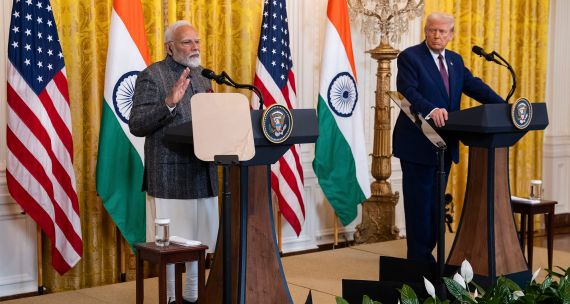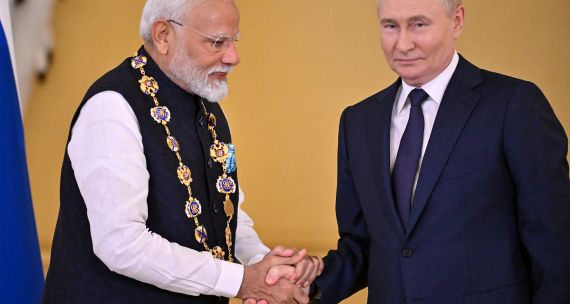The Takeaway
The India–European Free Trade Association (EFTA) Trade and Economic Partnership Agreement, or TEPA, marks New Delhi’s westward pivot and reflects a new generation of trade deals linking market access with investment, sustainability, job creation, and technology collaboration. It also signals India’s growing readiness to uphold stronger environmental and ethical standards, a shift that echoes Canada’s own recent trade pacts with Indonesia and Europe. For Canada, the deal underscores common ground with India in clean technology, agri-food processing, and sustainable growth — sectors where both countries are shaping the economy of the future.
In Brief
- Signed on March 10, 2024, after 21 rounds of negotiations that began in 2008, the India–EFTA TEPA came into effect on October 1, 2025. The pact marks India’s first FTA in force with developed European economies — Switzerland, Norway, Iceland, and Liechtenstein — with the subsequent India–U.K. FTA, signed in July 2025, pending ratification.
- EFTA granted India tariff cuts on 99.6 per cent of India’s exports, while India offered similar access for 95 per cent of EFTA exports., spanning industrial products such as smartphones and machinery, as well as high-value consumer goods including wines, watches, and processed agri-food such as chocolate and coffee capsules.
- Tariff concessions on selective agricultural goods, phased over seven to 10 years — including on seafood (salmon, shrimps), fruits (avocados, berries), and vegetable oils (olive, canola), while leaving out dairy and soya — reflect India’s cautious, incremental liberalization in agriculture.
- The TEPA also introduces India’s first-of-its-kind investment-linked framework. EFTA have committed to bringing in C$140 billion in foreign direct investment(FDI) and creating one million direct jobs in India over the next 15 years, with India retaining the right to review concessions after 15 years if the targets are not met.
- For the first time in any Indian trade deal, there is a dedicated section on Trade and Sustainable Development, outlining cooperative commitments on labour rights, environmental protection, responsible business conduct, and collaboration on green technologies and sustainable fisheries. The forthcoming India–UK FTA builds on this framework with separate, detailed sections on Environment, Labour, Gender, and Development Cooperation, supported by cooperative mechanisms, information sharing, and formal working groups to advance these commitments.
Implications
The tariff concessions under TEPA mark a calculated shift in India’s trade policy — immediate liberalization where it strengthens domestic capacity, phased seven-to-10-year tariff cuts to give industries time to adjust, and continued protection for sensitive sectors. Agriculture, which employs over half of India’s population and serves as a key electoral base, remains largely shielded, with an average import tariff of 36 per cent. Dairy and soya were fully excluded, while cereals, pulses, and edible oils saw only limited easing. Pharmaceuticals and gold also remain protected to safeguard domestic producers and manage competition from Switzerland’s major export sectors.
EFTA members, however, gain greater access in areas such as machinery, metals and chemicals, where tariffs were previously steep. This means access may remain limited in dairy, soybeans, pulses, and gold, but targeted opportunities may emerge in agricultural and agri-processed products — and in industrial goods — for countries such as Canada as India continues its gradual market opening.
Beyond trade in goods, major gains are expected through investments and service sector access. The agreement opens 105 service sub-sectors on India’s side and over 100 from EFTA members, creating opportunities in information technology, business, education, and professional services. It removes labour-market testing for temporary movement of professionals and paves the way for Mutual Recognition Agreements in fields such as nursing, accounting, and architecture — a framework mirrored in the India–U.K. trade deal to enhance skilled worker mobility. On investment, EFTA states have pledged FDI in India over 15 years, tied to job creation and industrial capacity, while short-term portfolio flows are excluded. TEPA’s Intellectual Property provisions modestly tighten India’s patent rules, signalling its intent to align with high European standards and attract high-quality, innovation-driven investment.
For EFTA members, the agreement brings both commercial opportunity and strategic relief. The bloc currently runs a trade deficit with India, and expanded market access could help narrow that gap. Switzerland — India’s largest EFTA trading partner, which was also recently hit by 39 per cent U.S. tariffs — stands to gain the most from duty-free access for machinery, chemical products, watches, and processed foods such as chocolate and coffee. Norway, meanwhile, benefits from improved market access for seafood, metals, and clean-tech machinery, alongside deeper co-operation with India on green maritime technologies and sustainable shipbuilding
The agreement could benefit Canada in future trade negotiations with India. While no concessions were extended on dried peas and lentils — Canada’s top two exports to India together accounting for 26 per cent of total exports in 2024— several other key Canadian export items, which collectively make up about 40 per cent of exports, including bituminous coal, potash, newsprint, copper ore, wood pulp and crude petroleum, received tariff cuts under the TEPA.
| Serial Number | Canada’s Top Export Products to India |
Canada’s Export Share (2024) (per cent) |
Base Tariff Rate (per cent) |
Tariff Concessions to EFTA countries |
| 1. | Peas dried, shelled | 15 | 50 | Excluded (No concessions) |
| 2. | Lentils, dried, shelled | 11 | 22 | Excluded (No concessions) |
| 3. | Bituminous coal | 11 | 2.75 | 0 per cent for all EFTA countries (immediate) |
| 4. | Potassium Chloride | 8 | 8.25 | 0 per cent by 2032 (eliminated in 7 years) |
| 5. | Wood pulp and chemical wood pulp | 7 | 5.5 | 0 per cent for all EFTA countries (immediate) |
| 6. | Newsprint, in rolls & sheets | 5 | 11 | 0 per cent — Iceland (immediate); Norway (in 5–10 yrs); Switzerland & Liechtenstein (in 7 yrs) |
| 7. | Copper ores & concentrates | 5 | 2.75 | 0 per cent for all EFTA countries (immediate) |
| 8. | Crude petroleum oil | 3 | Rs 1.1 per tonne | 0 per cent for EFTA countries — except Iceland (no concession) |
Source: Trade Data Online; Explanatory Note by EFTA Secretariat
These reductions give EFTA exporters a head start in India’s industrial and resource sectors, highlighting where Canada could negotiate stronger access terms in future talks.
What’s Next
Positioning Canada in India’s evolving trade landscape
India’s growing appetite for comprehensive trade and economic partnership agreements marks a strategic shift toward deeper engagement with Western economies. Since 2021, it has signed deals with the U.A.E., Australia, the EFTA bloc, and the U.K., while negotiating with the EU and the U.S.
After stepping away from the Regional Comprehensive Economic Partnership (RCEP) in 2019, New Delhi has embraced a new generation of trade pacts that pair market access with investment, service mobility, skills, and technology collaboration. The gradual opening of its processed food and agri-products market under the EFTA pact reflects this cautious, deliberate liberalization.
For Canada, this evolution makes India a more compatible and forward-looking partner — one gradually more aligned with global standards on environment, labour, and intellectual property. As both countries look to strengthen their Indo-Pacific engagement, it opens a window to rebuild ties grounded in shared values and priorities.
• Edited by Vina Nadjibulla, Vice-President Research & Strategy, and Ted Fraser, Senior Editor, APF Canada





